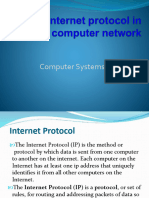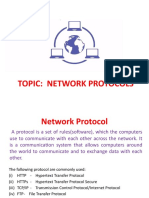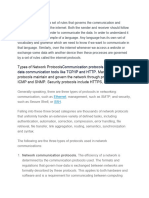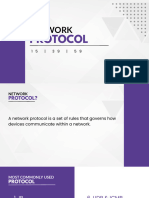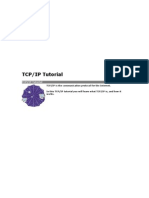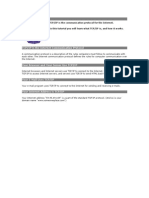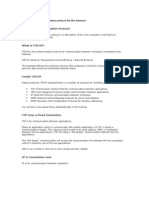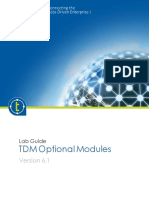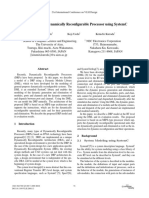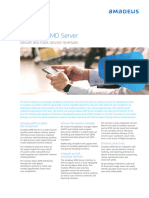0% found this document useful (0 votes)
32 views3 pagesCN7 - Protocols
The document provides an overview of various network protocols used for communication between computers, including TCP/IP, FTP, PPP, HTTP, SMTP, and POP3. It explains the functions of each protocol, such as data transfer, email communication, and remote login capabilities. Additionally, it highlights the importance of these protocols in facilitating efficient data exchange and connectivity over the internet.
Uploaded by
ordinal02bankCopyright
© © All Rights Reserved
We take content rights seriously. If you suspect this is your content, claim it here.
Available Formats
Download as PDF, TXT or read online on Scribd
0% found this document useful (0 votes)
32 views3 pagesCN7 - Protocols
The document provides an overview of various network protocols used for communication between computers, including TCP/IP, FTP, PPP, HTTP, SMTP, and POP3. It explains the functions of each protocol, such as data transfer, email communication, and remote login capabilities. Additionally, it highlights the importance of these protocols in facilitating efficient data exchange and connectivity over the internet.
Uploaded by
ordinal02bankCopyright
© © All Rights Reserved
We take content rights seriously. If you suspect this is your content, claim it here.
Available Formats
Download as PDF, TXT or read online on Scribd
/ 3









